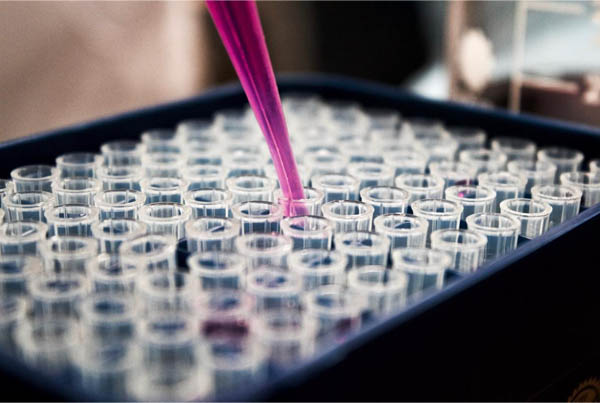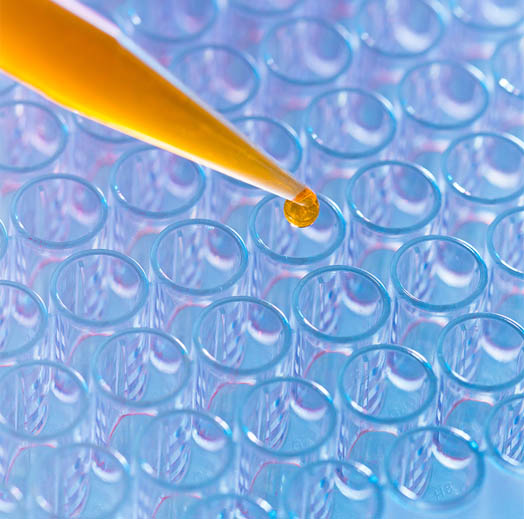ELISA Kits knowledges
ELISA kits are commonly used laboratory tools in biomedical research and clinical diagnostics. As a highly accurate and sensitive detection method, ELISA enables qualitative and quantitative analysis of specific molecules (such as antigens, antibodies, proteins, etc.) in biological samples. They are commonly employed for detecting disease biomarkers, antibodies, drugs, and other scientific research.

ELISA kits typically include pre-packaged reagents, serum plates, standard samples, substrates, etc., to provide a standardized, fast, and reproducible method for experiments. To ensure reliable results with ELISA kits, the following points should be noted when handling the serum plates:
1. Cleaning and disinfection: Prior to working with the serum plates, ensure they are clean and sterile. Clean them using appropriate detergents and disinfection methods to prevent contamination from impurities, residues, or bacteria.
2. Proper handling of fluids: Use appropriate techniques and tools to add fluid samples (such as serum, and plasma) to specific wells of the serum plate according to experimental requirements. Ensure to avoid cross-contamination and confusion between samples.
3. Reference: The use of negative and positive control samples is essential for the validation and calibration of ELISA kits to ensure the accuracy and reliability of the results.
4. Appropriate timing and temperature: Control the timing and temperature of the experimental procedures according to the kit's requirements. During the addition of reagents and incubation periods, adhere to the recommended time and temperature ranges to ensure experiment accuracy and reproducibility.

5. Washing steps: Incorporate washing steps during the experiment to remove unbound substances. Use the correct buffer solution and washing protocol during the washing process, following the manufacturer's guidelines or optimized experimental protocols.
6. Avoid well drying: Avoid leaving the wells of the serum plate empty for extended periods to prevent well drying and sample evaporation. Maintain a light-shielded condition for the serum plate during handling or use well covers or sealing films as per experimental requirements.
7. Labeling and recording: Properly label each serum plate for tracking and identification during the experiment. Record the addition of samples and reagents to each well, ensuring correct operations and result traceability.
8. Proper storage conditions: Store and preserve the serum plate appropriately according to the requirements of the kit. Follow the recommendations provided in the kit's instructions regarding temperature, humidity, and light exposure.
Note: The use of serum plates cannot completely eliminate the potential for errors in ELISA kit operation. However, following strict operating procedures can help ensure the accuracy and reliability of ELISA results.
Sekbio is a technology research and development company specializing in reagent development and CDMO services, dedicated to developing more accurate IVD diagnostic products. Our company has forged strong partnerships with clients across Europe, North America, and Asia, leading to remarkable achievements.
Our company's ELISA kits are highly sensitive and applicable to a wide range of research fields and clinical applications, and can be customized to meet your specific needs. As a customer-oriented company, we are committed to providing comprehensive support and services to our clients! If you would like further information, please don't hesitate to reach out to us!
ATTN: Jack sun (Global Sales Manager)
MOBILE: +86-13590345917
E-MAIL: sales@sekbio.com
Official website: https://www.sekbio.com/
Related Immunoassays
- Cardiac Markers
-
Tumor Marker
-
PGII
-
G17
- CA50
-
CA125
- CA242
-
CA15-3
- CA19-9
- CA72-4
-
Pepsinogens I (PGI)
-
Human Epididymis 4 (HE4)
- Prostate-Specific Antigen (PSA)
- Squamous Cell Carcinoma (SCC)
- Neuron-Specific Enolase (NSE)
- Cytokeratin 19 Fragment (CYFRA21-1)
- Human Progastrin-releasing Peptide (ProGRP Tumor Marker)
- Protein Induced by Vitamin K Absence or Antagonist-II (PIVKA II Tumor Marker)
- Alpha-fetoprotein(AFP)
-
CEA
-
Human Chitinase 3-like 1
-
PGII
- Inflammatory Marker
- Infectious Disease
- Hormones
- Thyroid Function
- Glucose Metabolism
- Bone Marker
- Others
-
Heterophilic Blocking Reagent
- Animal Diagnostics

















